3 The instructions Use the definition of derivative to find f ′ ( x) if f ( x) = tan 2 ( x) I've been working on this problem, trying every way I can think of At first I tried this method lim h → 0 tan 2 ( x h) − tan 2Tanh(2x) = (exp(2x) exp(2x))/(exp(2x) exp(2x)) where I have written e to the power of 2x as exp(2x), etc The derivative of a ratio is the derivative of the numerator times the denominator minus the derivative of the denominator times the nuThe derivative of tan 2x is 2 sec 2 (2x) (ie) d/dx tan 2x = 2 sec 2 (2x)
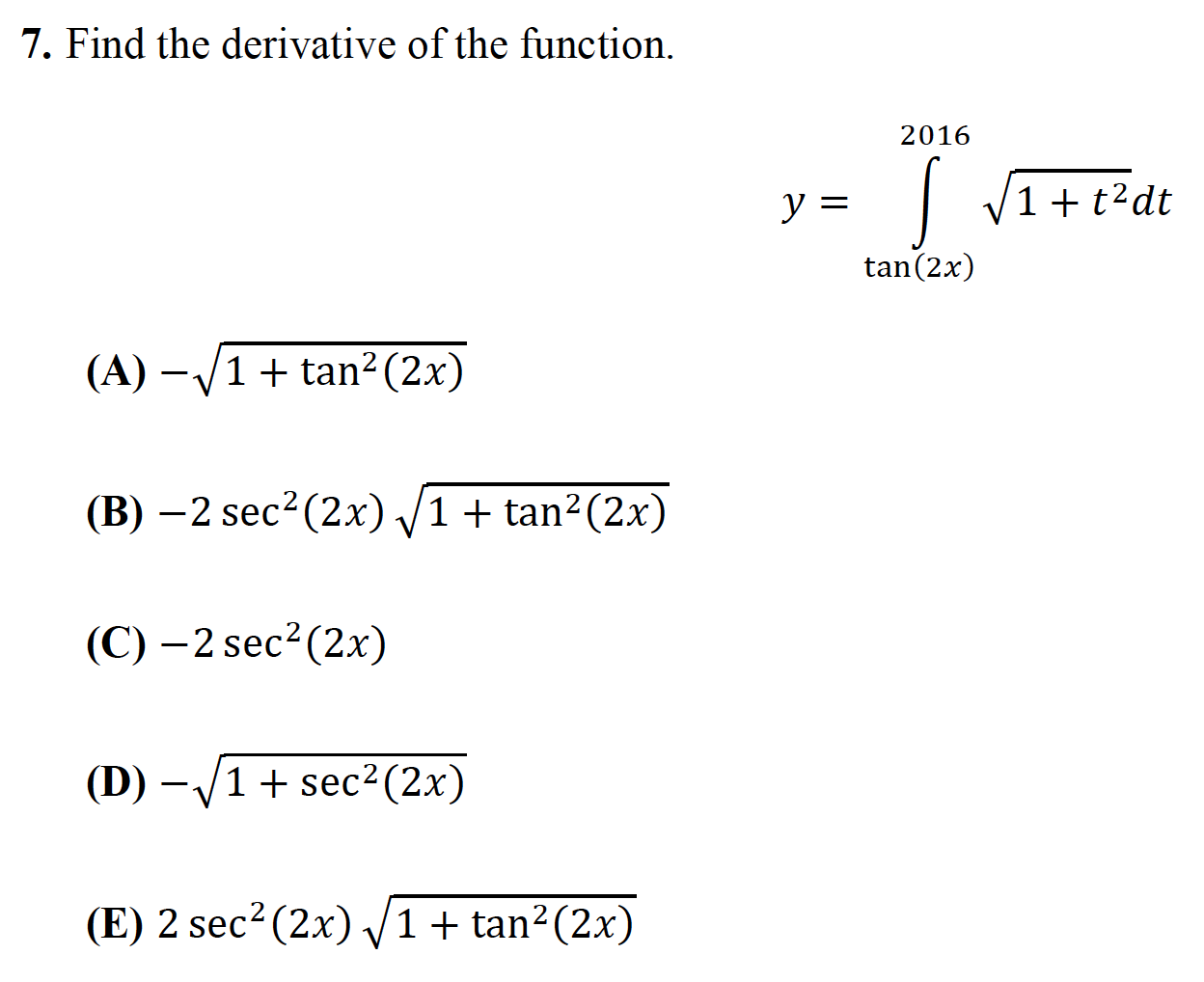
7 Find The Derivative Of The Function 16 Y 11 Chegg Com
Sec^2x + tan^2x derivative
Sec^2x + tan^2x derivative-The derivative of a polynomial is the sum of the derivatives of its terms The derivative of a constant term is 0 The derivative of ax^{n} is nax^{n1}The derivative of a complex function may or may not exist To find out, we use test equations In this lesson, we will derive and use the CauchyRiemann equations and then apply these tests to



1
Math Calculus Calculus questions and answers Which of the following is a n) antiderivative (s) of 4 sec (2x)2 tan (2x) tan (22) sec (22) sec? Derivative of y = ln u (where u is a function of x) Unfortunately, we can only use the logarithm laws to help us in a limited number of logarithm differentiation question types Most often, we need to find the derivative of a logarithm of some function of xFor example, we may need to find the derivative of y = 2 ln (3x 2 − 1) We need the following formula to solve such problemsSolution for 9 y = 3tan2x tan 2x Q A skydiver weighs 180 lbs with equipment fall vertically downward from an altitude of 5000 feet She A Since you have posted a question with multiple subparts, we will solve first three subparts for yo
The Derivative Calculator supports computing first, second, , fifth derivatives as well as differentiating functions with many variables (partial derivatives), implicit differentiation and calculating roots/zeros You can also check your answers!Interactive graphs/plots help visualize and better understand the functionsDifferentiate the following from first principle tan 2x > 11th > Maths > Limits and Derivatives > Derivative of Trigonometric Functions > Differentiate the following
Follow Us The derivative of the tangent of x is the secant squared of x This is proven using the derivative of sine, the derivative of cosine and the quotient rule The first step in determining the tangent of x is to write it in terms of sine and cosine The quotient identities indicate this equals the sine of x divided by the cosine of xDerivative of ln (tan (2x)) Simple step by step solution, to learn Simple, and easy to understand, so don`t hesitate to use it as a solution of your homework Below you can find the full step by step solution for you problem We hope it will be very helpful for you and it will help you to understand the solving processUse Trigonometric Differentiation the derivative of tan x \tan {x} tanx is sec 2 x \sec^ {2}x sec2x − 1 − 1 tan 2 x 1\frac {1} {\tan^ {2}x} −1− tan2x1



2




If Y 2 Tan X 2 Prove That Dy Dx 2 1 Cosx Maths Application Of Derivatives Meritnation Com
We need to find derivative of f(x) = tan (2x) Derivative of a function f(x) is given by – {where h is a very small positive number} ∴ derivative of f(x) = tan (2x) is given as – To apply sandwich theorem ,we need 2h in denominator, So multiplying by 2 in numerator and denominator by 2Derivative is the important tool in calculus to find an infinitesimal rate of change of a function with respect to its one of the independent variable The process of calculating a derivative is called differentiation Follow the rules mentioned in the above derivative calculator and understand the concept for deriving the given function to The Second Derivative Of tan^2x To calculate the second derivative of a function, differentiate the first derivative From above, we found that the first derivative of tan^2x = 2tan (x)sec 2 (x) So to find the second derivative of tan^2x, we need to differentiate 2tan (x)sec 2 (x)



Is This Correct Because My Book Says The Answer Is Tan 2x Sec 2x Secx Calculus
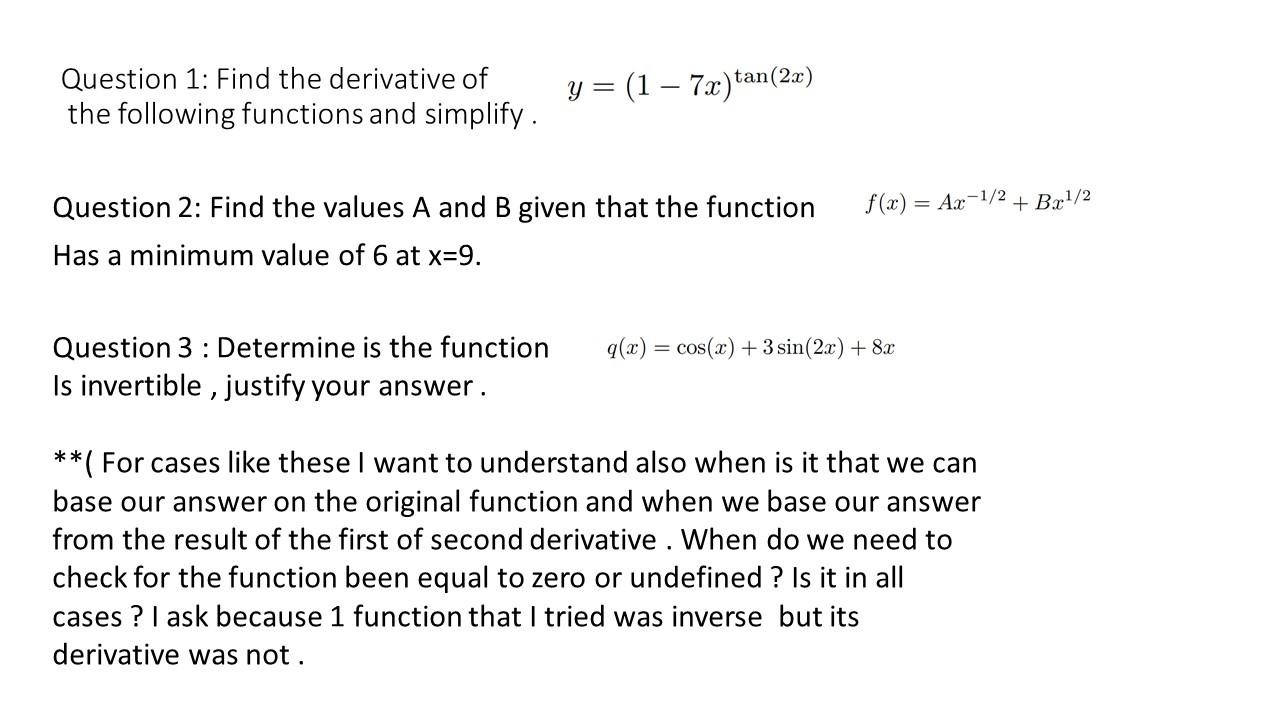



Question 1 Find The Derivative Of The Following Chegg Com
In mathematics, the Schwarzian derivative, named after the German mathematician Hermann Schwarz, is a certain operator that is invariant under all Möbius transformationsThus, it occurs in the theory of the complex projective line, and in particular, in the theory of modular forms and hypergeometric functionsIt plays an important role in the theory of univalent functions,To apply the Chain Rule, set u u as tan ( x) tan ( x) Differentiate using the Power Rule which states that d d u u n d d u u n is n u n − 1 n u n 1 where n = 3 n = 3 Replace all occurrences of u u with tan ( x) tan ( x) The derivative of tan(x) tan ( x) with respect to x x is sec2(x) sec 2 ( x) Reorder the factors of 3tan2(x)sec2Find stepbystep Calculus solutions and your answer to the following textbook question Find both first partial derivatives z = tan(2xy)




Derivative Of Tan X Old Video Khan Academy



Www Berkeleycitycollege Edu Wp Wjeh Files 12 08 Calculus Note Intro Derivative Pdf
Derivative proof of tan (x) We can prove this derivative by using the derivatives of sin and cos, as well as quotient rule Write tangent in terms of sine and cosine Take the derivative of both sides Use Quotient Rule Simplify Use the Pythagorean identity for sine and cosine and simplifyIn this lesson I will show you how to differentiate ln(tan^2x)You probably know the series for \tan^ {1} t Plug in 2x^2 for t If you do not know the series for \arctan t, you undoubtedly know the series for \dfrac {1} {1u} Set u=x^2, and integrate You probably know the series for tan−1t Plug in 2x2 for t If you do not know the series for arctant, you undoubtedly know the series for 1−u1




Proof That The Derivative Of Tan X Sec 2x Using The Quotient Rule Album On Imgur
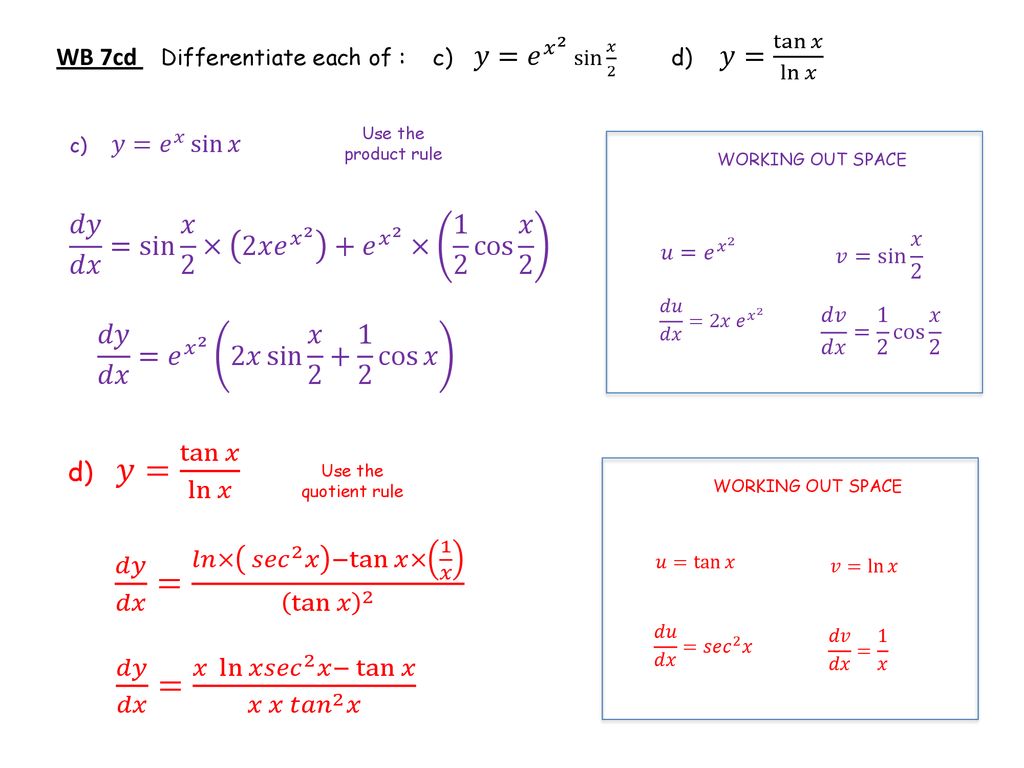



Ppt Download
About Press Copyright Contact us Creators Advertise Developers Terms Privacy Policy & Safety How works Test new features Press Copyright Contact us CreatorsThe derivative is an important tool in calculus that represents an infinitesimal change in a function with respect to one of its variables Given a function , there are many ways to denote the derivative of with respect to The most common ways are andMath\begin{align}\displaystyle y&=e^{\ln\sqrt{1\tan^2\ x}}\\y&=e^{\ln\ \sec\ x} \qquad\text{Take ln on both sides,}\\\ln \ y &=\ln\ {e^{\ln\ \sec\ x}}\\\ln\ y




What Is The 2nd Derivative Of Y Tanx Socratic




Ex 13 1 22 Lim X Pi 2 Tan 2x X Pi 2 Chapter 13 Class 11
Example \(\PageIndex{5}\) Using Properties of Logarithms in a Derivative Find the derivative of \(f(x)=\ln\left(\dfrac{x^2\sin x}{2x1}\right)\) Solution At first glance, taking this derivative appears rather complicated However, by using the properties of logarithms prior to finding the derivative, we can make the problem much simpler $\begingroup$ @HaKuNaMaTaTa amWhy's penultimate step confirms this with the derivative of $\tan^2 x$ $\endgroup$ – SoboKevSpace Aug ' at 1555 $\begingroup$ @amWhy its $(tanx)'$ and not $(tan^2x)'$ ) $\endgroup$ – DatBoi Aug 26 ' at 658 Example 22 Find the derivative of tan (2x 3) Let y = tan (2x 3) We need to find derivative of y, ie 𝑑𝑦/𝑑𝑥 = (𝑑 tan〖(2𝑥3)〗)/𝑑𝑥



2




Example 22 Find Derivative Of Tan 2x 3 Chapter 5 Class 12
The derivative of tan (2x) is equal to two times the secant squared of two times x Using mathematical notation, the equation is written as d/dx tan (2x) = 2sec^2 (2x) The derivative of tan (2x) can be found by using the quotient rule and the chain ruleTranscribed image text E 1 Find the 2nd derivative of y 2x – 1 y = 2x 1 = 2 Differentiate x²y – xy2 x2 y2 = 0 Differentiate 3 y = 4cos (1) 4 y = x?sin (9) 5 y = 2csc(1 – 3x) 6 y = 9xsec (3) sin2x 7 y = 1cos2x tan 2x 8 y = x2 sinx sin²x cos2x sin2x7c cos2x 9 y = Invx3 INICAGraph of tan x and its Derivative The graphs of \( \tan(x) \) and its derivative are shown below Derivative of the Composite Function tan (u(x)) We now have a composite function which is a function (tan) of another function (u)



2



Solved Find The Derivative Of F X 2x 2 E X Tan X Course Hero
Derivative Of Tan 2x Sec 2x Right side 12tan^2 (x) from the trig identity sec^2x tan^2x = 1 sec^2x tan^2x 2tan^2x = 12tan^2x simp lying this sec^2x tan^2x So right side now matches left side 👍Tanx = t Sec^2 x dx= dt So now it is, 1/ (1t)^2 dt This integral is given by 1/1t and t= tanx So, it is cosx/cosx sinx tanx = t Sec^2 x dx= dt So nowFree derivative calculator differentiate functions with all the steps Type in any function derivative to get the solution, steps and graphDerivative of (tan (2x))^7 Derivative of (tan (2x))^7 Simple step by step solution, to learn Simple, and easy to understand, so don`t hesitate to use it as a solution of your homework Below you can find the full step by step solution for you problem We hope it will be very helpful for you and it will help you to understand the solving process




The Derivative Of Tan 2x Derivativeit




Differentiation Of Tanx 2 Youtube
Derivatives and antiderivatives The derivatives of trigonometric functions result from those of sine and cosine by applying quotient rule The values given for the antiderivatives in the following table can be verified by differentiating them The number C is a constant of integrationCompute answers using Wolfram's breakthrough technology & knowledgebase, relied on by millions of students & professionals For math, science, nutrition, historyDerivative Calculator computes derivatives of a function with respect to given variable using analytical differentiation and displays a stepbystep solution It allows to draw graphs of the function and its derivatives Calculator supports derivatives up to
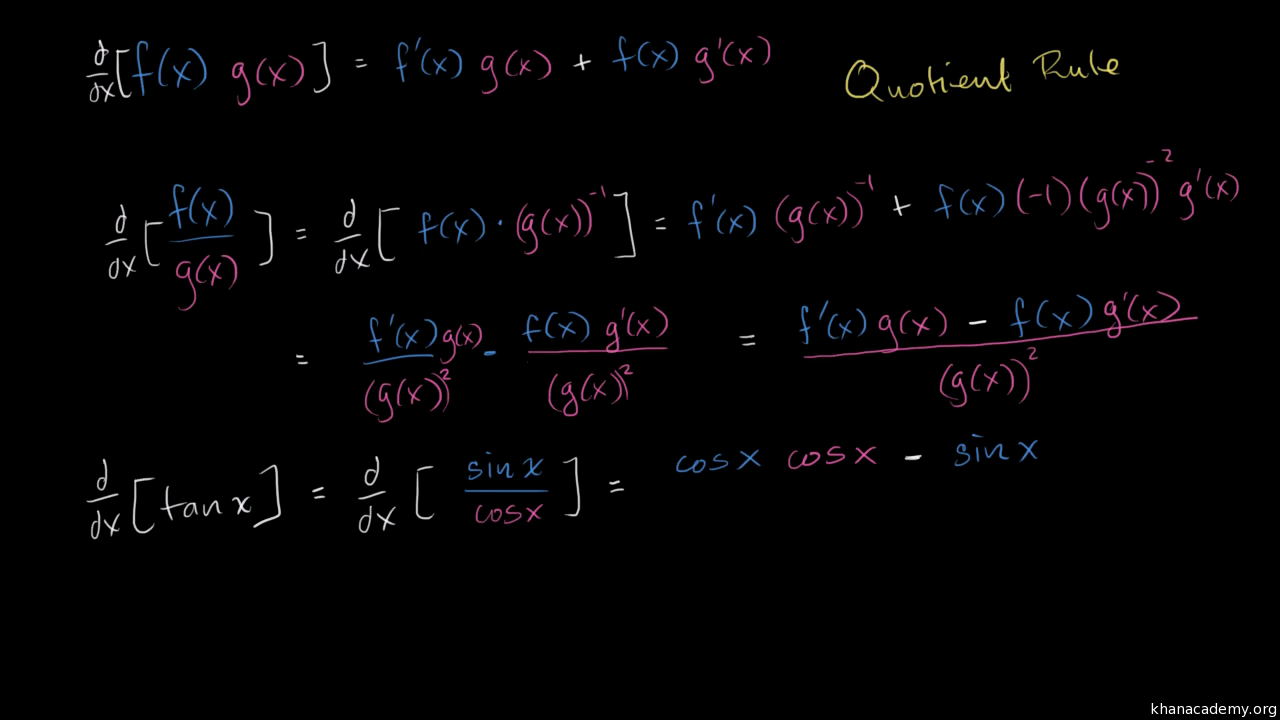



Derivative Of Tan X Old Video Khan Academy




Ii F Find Derivative Of Tan 2x At X Pi 6 Youtube
The power rule for derivatives is simply a quick and easy rule that helps you find the derivative of certain kinds of functions In this lesson, you will learn the rule and view a variety of examplesDerivatives › Second Derivative Pre Algebra Order of Operations Factors & Primes Fractions Long Arithmetic Decimals Exponents & Radicals Ratios & Proportions Percent Modulo Mean, Median & Mode Scientific Notation Arithmetics AlgebraSince 4 4 is constant with respect to x x, the derivative of 4 x 4 x with respect to x x is 4 d d x x 4 d d x x Move 4 4 to the left of sec 2 ( 4 x) sec 2 ( 4 x) Differentiate using the Power Rule which states that d d x x n d d x x n is n x n − 1 n x n 1 where n = 1 n = 1 Multiply 4 4 by 1 1



2



Www Math Purdue Edu Kyochman Ma Lesson14 Notes Implicitdifferentiation Pdf
So this is not the derivative of tanx Instead, it's just a different way of writing tanx If you don't recognize this identity, it might be a good idea to spend some time viewing the videos dealing with trig identities The derivative of tanx is sec²x() All three aboveDerivative of inverse tangent Calculation of Let f (x) = tan 1 x then,




Trig Derivatives With Chain Rule Calculus 1 Chain Rule Calculus Chain Rule Calculus




Find The Derivative Of The Given Function Y Tan 2x 1 Cot 2x I Tried Converting The Original Function In Terms Of Sin And Cos But It Was Still Too Complicated To Be Called Simplified
Using the chain rule, the derivative of tan (2x) is 2sec2(2x) Finally, just a note on syntax and notation tan (2x) is sometimes written in the forms below (with the derivative as per the calculation above) Just be aware that not all of the forms below are mathematically correct The Second Derivative Of tan (2x) If tan2a=cot(a−18), where 2a is an acute angle, then find the value of a Sowie die additionstheoreme vom sinus und vom kosinus Y = tan 2x period Take the derivative of both sides of the equation tan y = x to get Tan(x) = sin(x) / cos(x) Source generalphysicsdotfileswordpresscom




05 Derivative Of Tangent Function Tan2x And Tanx 2 Youtube



2




Reciprocal Trig Functions Ppt Download




Limx 0 X 2 Tan 2x Tanx Maths Limits And Derivatives Meritnation Com




What Is The Derivative Of Tanh X Quora Felix Lucas En Ligne Catalogue Pdf



1




Resonance Aieee Iit Study Material Maths Complete Pdf By S Dharmaraj Issuu




06 Derivative By Substitution Of Trigonometric Ratio Tan 2 X 3 2tans Tan2x Youtube




Differentiate The Following From First Principle Tan 2x 1



How To Differentiate A 2x In Fact What Is The General Rule For Functions Like A Kx Where K Is Any Constant Quora



1
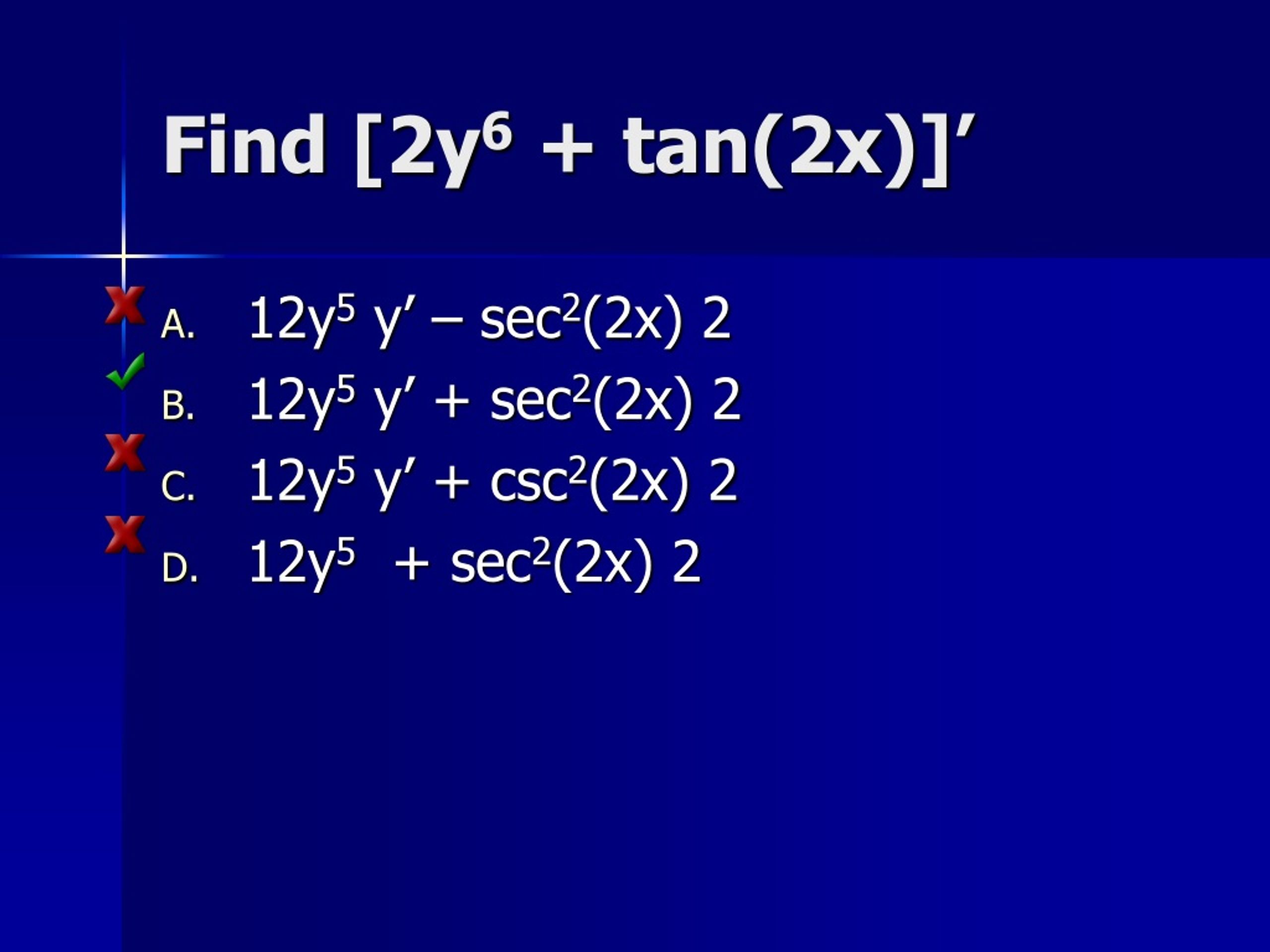



Ppt Implicit Differentiation Powerpoint Presentation Free Download Id



1




Find The Derivative From First Principle Of Function




Question 1 Integrate The Following Function Sec 2x Chegg Com
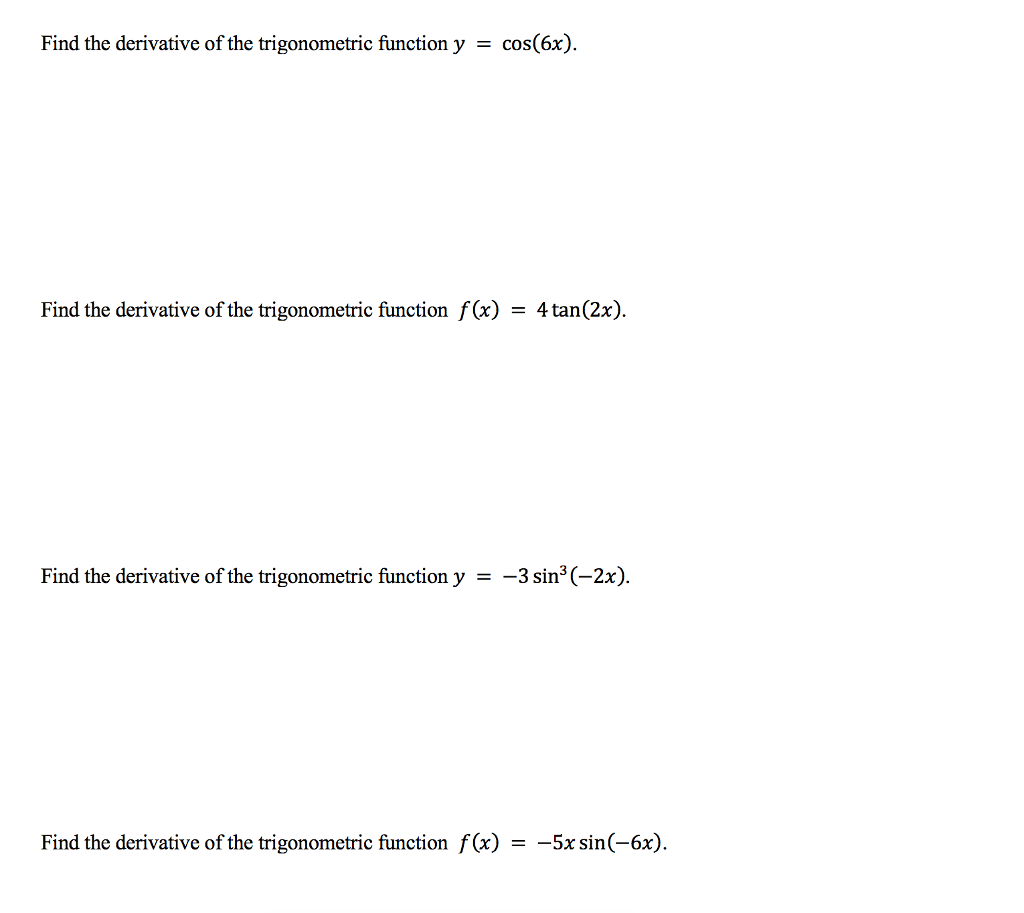



Solved Find The Derivative Of The Trigonometric Function Chegg Com




Calculus Problem Sheet 11 Studocu




Derivative Rules For Trigonometric Functions




Show That Z Ln X 2 Y 2 2 Tan 1 Y X Satisfies The Laplaces S Equation Mathematics Stack Exchange



Help With Letter I Finding The Derivative Calculus




Howto How To Find Vertical Asymptotes Of Tan2x




If Y Tan X Tan 2x Tan 3x Sin 12x 0 Then Dy Dx Has The Value Equal To




Derivatives Of Trigonometric Functions Ppt Download



What Is The Derivative Of Tan 1 Sec X Tan X Quora




Derivative Of Tan 2x 3 From First Principle Brainly In



2
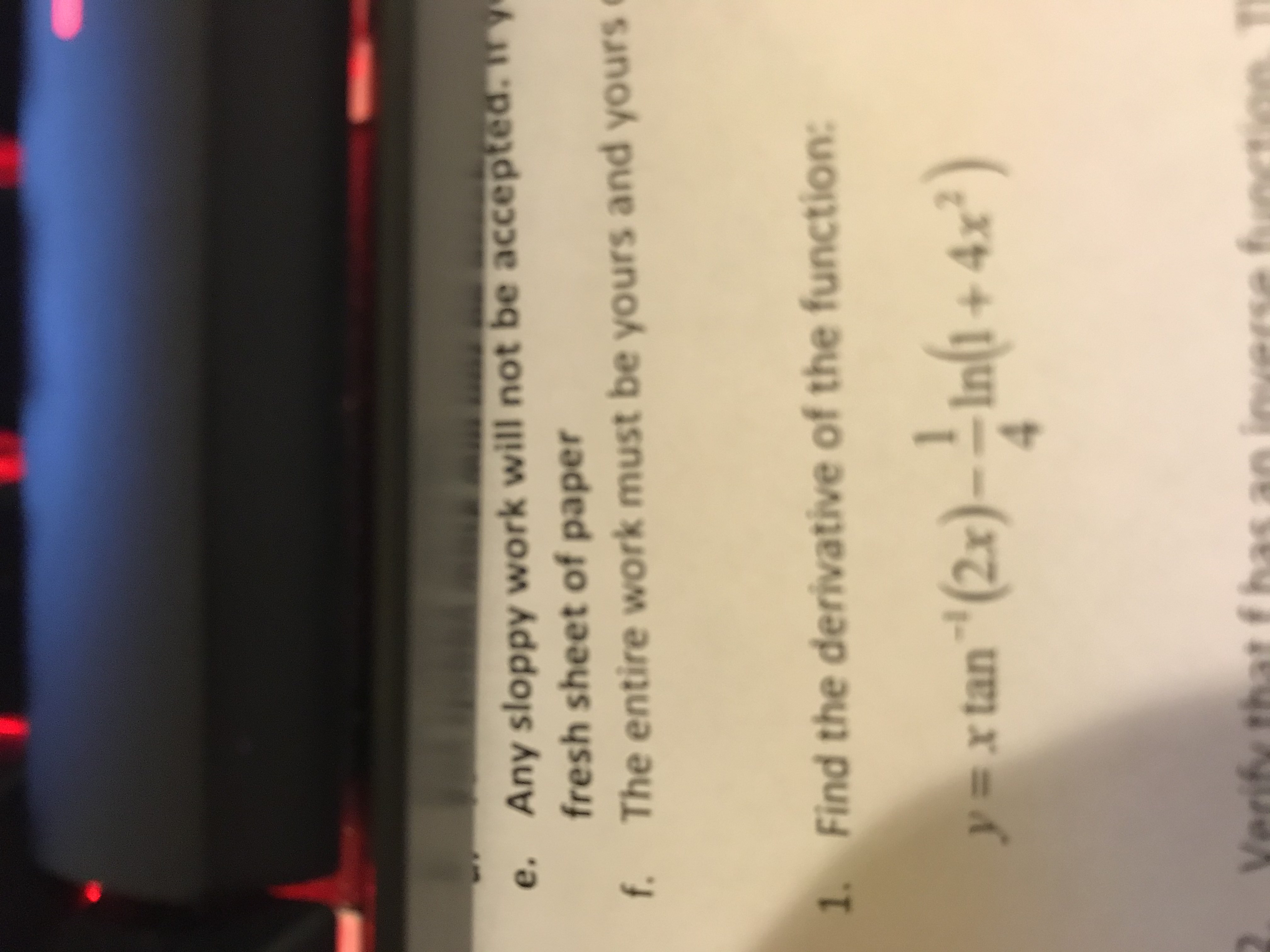



Answered Any Sloppy Work Will Not Be Accepted Bartleby




Integration Of Inverse Tan 2x Integration By Parts Youtube




What Is The Derivative Of Sin Tan 2 X Gauthmath




7 Find The Derivative Of The Function 16 Y 11 Chegg Com




Solved The Second Derivative Of Y Tan 2 X Is A Y 2 Chegg Com




Ex 13 1 22 Lim X Pi 2 Tan 2x X Pi 2 Chapter 13 Class 11




Find The Derivative Of The Function X Tan 2x X Chegg Com



Www Math Purdue Edu Kyochman Ma Lesson14 Notes Implicitdifferentiation Pdf



Http Tajimasolis Weebly Com Uploads 3 7 3 4 Trig Normal And Tangent Practice Pdf



2




Evaluate Lim X Sqrt 1 Sin3x 1 Ln 1 Tan2x Maths Limits And Derivatives Meritnation Com




05 Derivative Of Tangent Function Tan2x And Tanx 2 Youtube




Differentiate The Following From First Principle Tan2x Youtube




Ex 13 1 22 Lim X Pi 2 Tan 2x X Pi 2 Chapter 13 Class 11



2
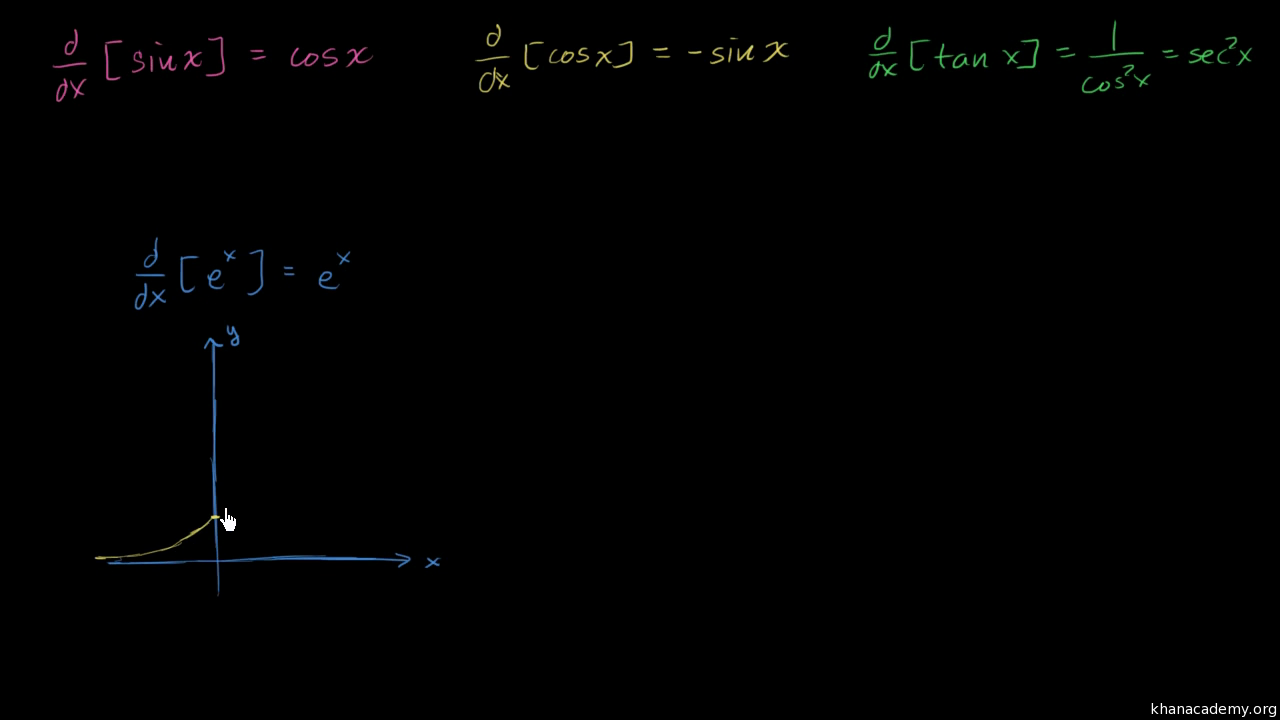



Derivatives Of Sin X Cos X Tan X Eˣ Ln X Video Khan Academy




Differentiate E Sqrt Tanx From First Principles
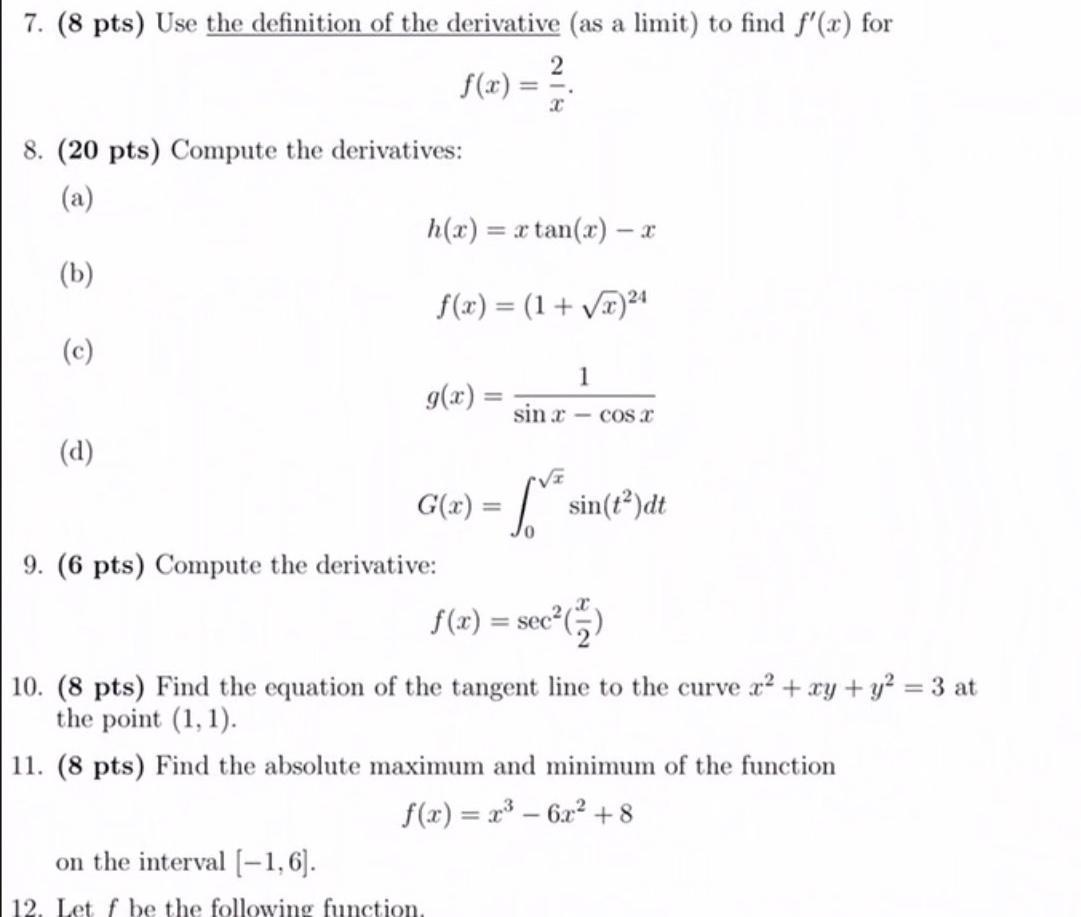



7 8 Pts Use The Definition Of The Derivative As A Chegg Com




How Do You Differentiate F X Tan 3x 2 E 1 X 1 Using The Quotient Rule Socratic




What Is The Derivative Of Sec 2 Tan 1 X With Respect To X



Solved Exercise 4 1 Derivative Of Trigonometric Functions Find The Derivative Of Each Of The Following Functions 1 Y Sin 2x 2 Sin X Cos X 2 Course Hero



1




Answered Question 5 Find The Derivative Y 3 Bartleby



What Is The Nth Derivative Of Cosx Quora




Find Derivative Of Sin2x Cos2x And Tan2x Using First Principle Brainly In




Solving The Differential Equation Dy Dx Tan 2 X Y Youtube




Assignment 5 Fall 18 Studocu



Www Pdsd Org Cms Lib Pa Centricity Domain 181 Work and solutions to the worksheet on finding derivatives of functions using the chain rule Pdf




Find The Derivative Of Tan 2x From First Principle Brainly In



2
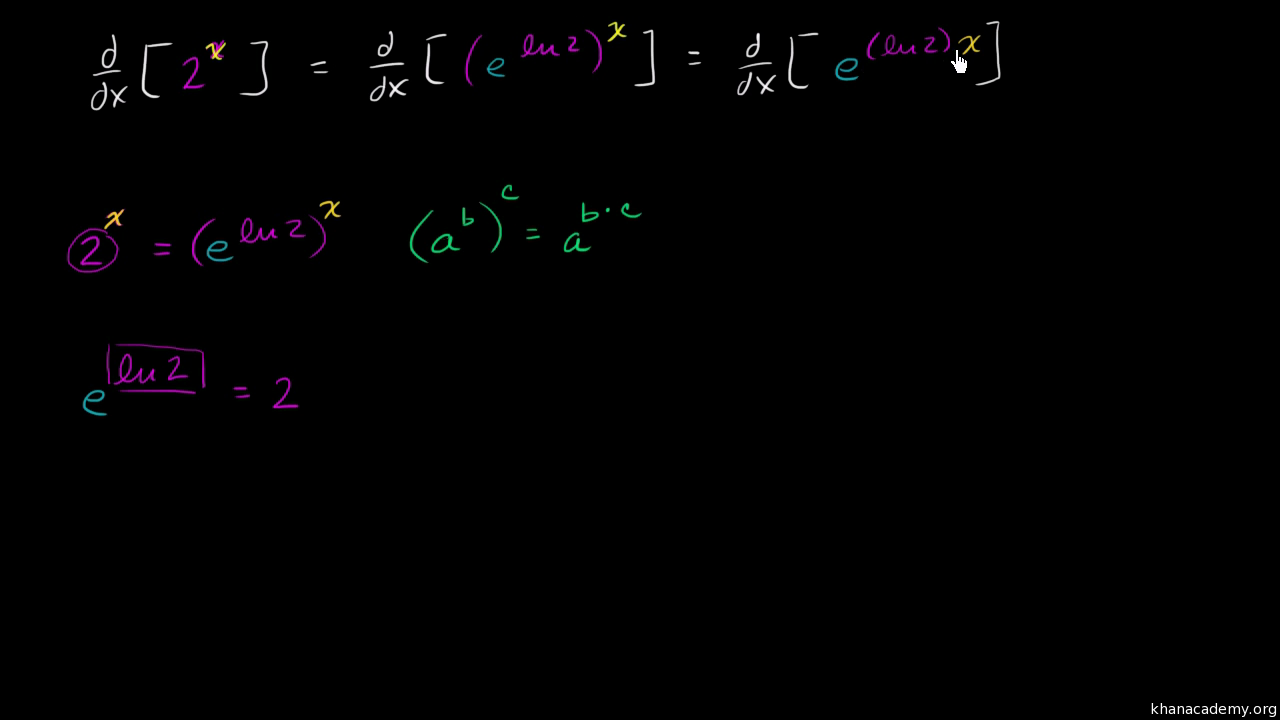



Derivative Of 2ˣ Old Video Khan Academy



Find The Derivative Of Fx Sec Tan 2x Gauthmath




How Do You Differentiate Y Sin X 6 Tan X 2 X 2 2 2 Socratic




Differentiate The Following W R T X Tan 1 E 2x 1e 2x 1



Web Auburn Edu Holmerr 1617 Textbook Derivsummary Print Pdf




Find The Derivative Of The Following Functions 1 Gauthmath




Ex 3 4 8 Find General Solution Of Sec 2 2x 1 Tan 2x Teachoo




Solved Lte 06 06 59 الا 8 Find The Derivative Of T Chegg Com




Differentiate The Following From First Principle Tan 2x




3 Determine The First Derivative Of The Following Gauthmath




Prove That Derivative Of Tan X Is Sec 2 X By First Principle




Prove That Derivative Of Tan X Is Sec 2 X By First Principle




Inttanx Tan2x Tan3x Dx Is Equal To




If Y Tan X Tan 2x Tan 3x Then Dy Dx Equals
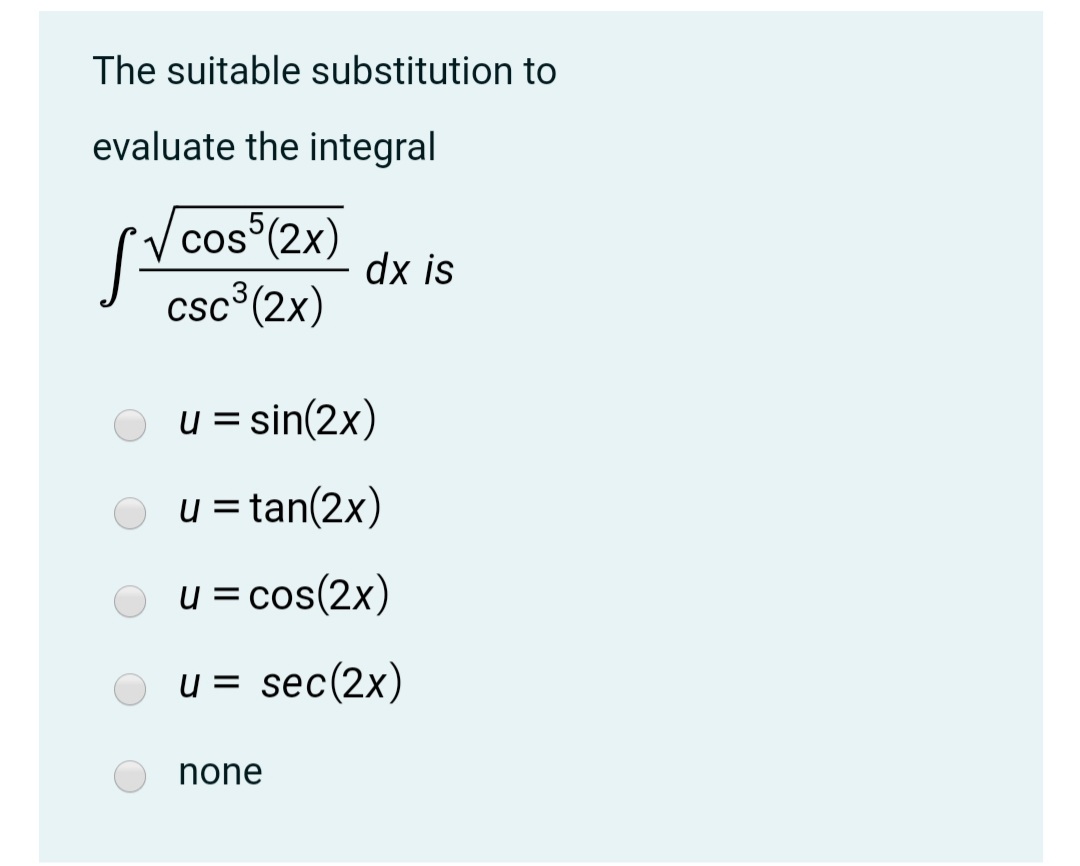



Answered The Suitable Substitution To Evaluate Bartleby




The Derivative Of Tan X Is Sec 2 X Why Mathematics Stack Exchange



The First Derivative Of Y2 Tan 1 Square Root Of Gauthmath




Rd Sharma Solutions For Class 11 Maths Updated 21 22 Chapter 30 Derivatives Download Free Pdf



2




The Derivative Of Ln 7x Derivativeit



2



Orion Math Iastate Edu Miriamc M165f18 3 6bis Notes165 F18 Pdf



2




Second Derivative Of Tan 2x Youtube




The Derivative Of H X 2 Sec 2 X Tan X Product Rule Example Youtube




Rd Sharma Solutions For Class 11 Maths Updated 21 22 Chapter 30 Derivatives Download Free Pdf



0 件のコメント:
コメントを投稿